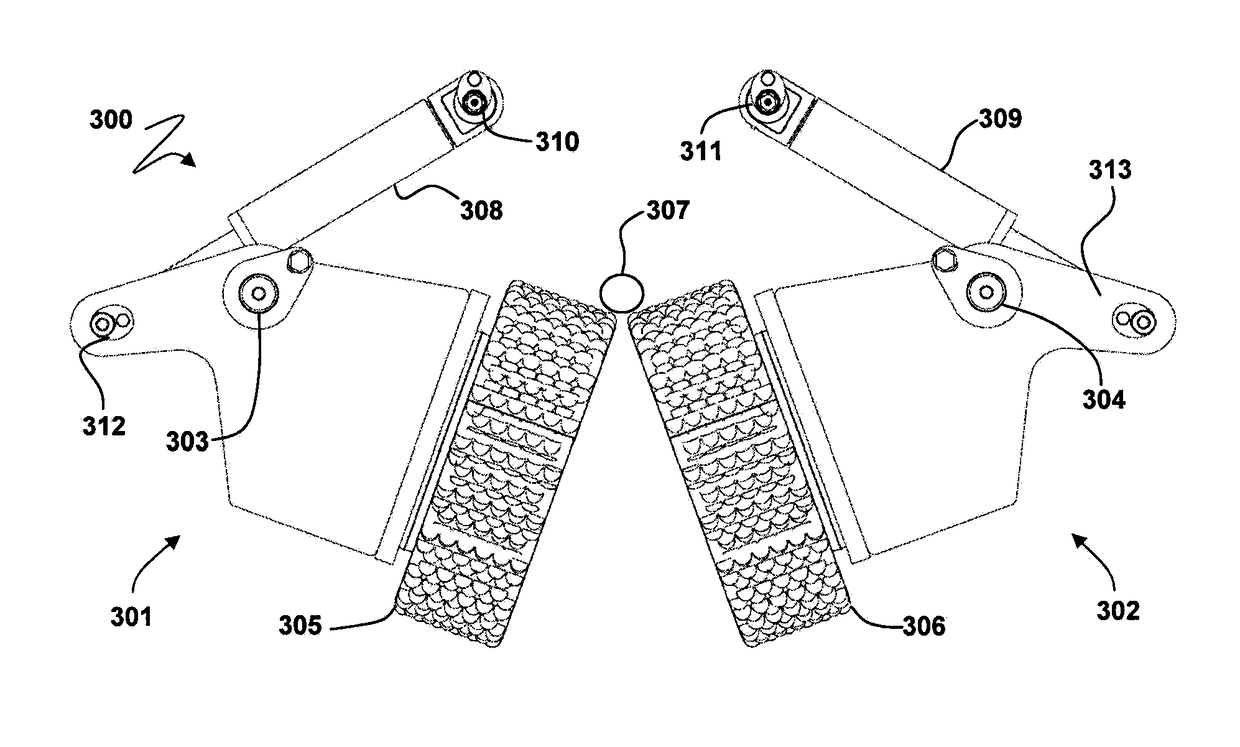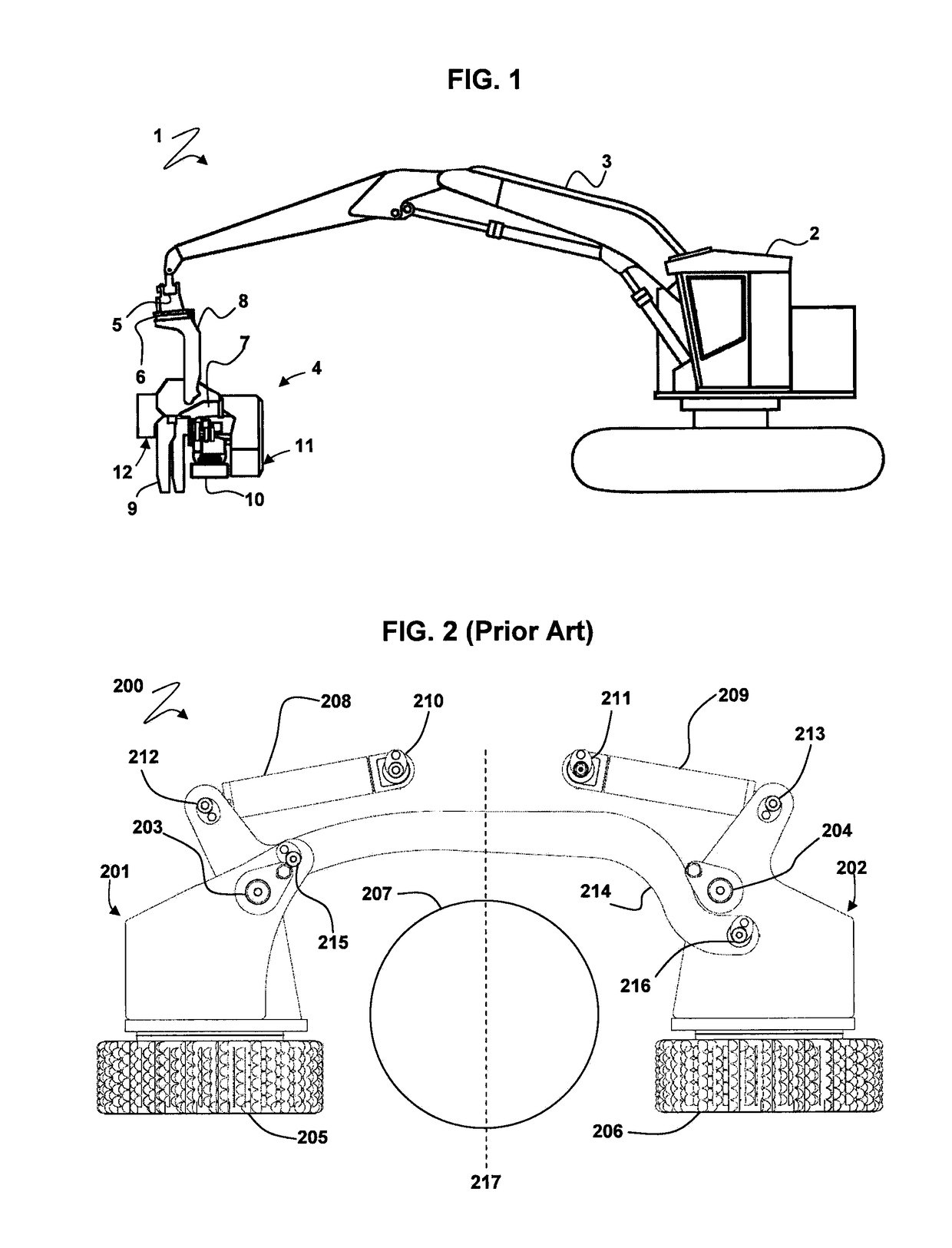Timber-working head and method of operation
a technology of timberworking head and pivoting arm, which is applied in the field of controlling the pivoting arms of the timberworking head, can solve the problems of less than optimal feed performance, damage to the stem, and ill-formed stems of the harvester head, so as to reduce the likelihood of the stem grating against the side, and maximize the value of the log cut
- Summary
- Abstract
- Description
- Claims
- Application Information
AI Technical Summary
Benefits of technology
Problems solved by technology
Method used
Image
Examples
Embodiment Construction
[0038]FIG. 1 illustrates an exemplary forestry work machine (generally indicated by arrow 1) comprising a carrier 2 supporting an articulated boom 3. An exemplary timber working implement in the form of a harvester head 4 is connected to an end of the boom 3, using a dog-bone joint 5 connected to a rotator 6, which is in turn connected to a frame 7 of the head 4 by hanger 8. In operation, the head 4 may swivel relative to the end of the boom 3 about the rotator 6, and pivotally move about its connection to the hanger 8 between a generally upright, harvesting position for felling a tree (not illustrated) and a generally prone, processing position (as illustrated) for processing the felled tree (e.g., delimbing, debarking, cutting to length).
[0039]The harvester head 4 comprises a pair of grapple or delimbing arms 9 pivotally connected to the frame 7 and configured to grasp the stem of the tree. The head 4 also comprises a pair of feed arms 10 pivotally connected to the frame 7 and com...
PUM
 Login to View More
Login to View More Abstract
Description
Claims
Application Information
 Login to View More
Login to View More - R&D
- Intellectual Property
- Life Sciences
- Materials
- Tech Scout
- Unparalleled Data Quality
- Higher Quality Content
- 60% Fewer Hallucinations
Browse by: Latest US Patents, China's latest patents, Technical Efficacy Thesaurus, Application Domain, Technology Topic, Popular Technical Reports.
© 2025 PatSnap. All rights reserved.Legal|Privacy policy|Modern Slavery Act Transparency Statement|Sitemap|About US| Contact US: help@patsnap.com



